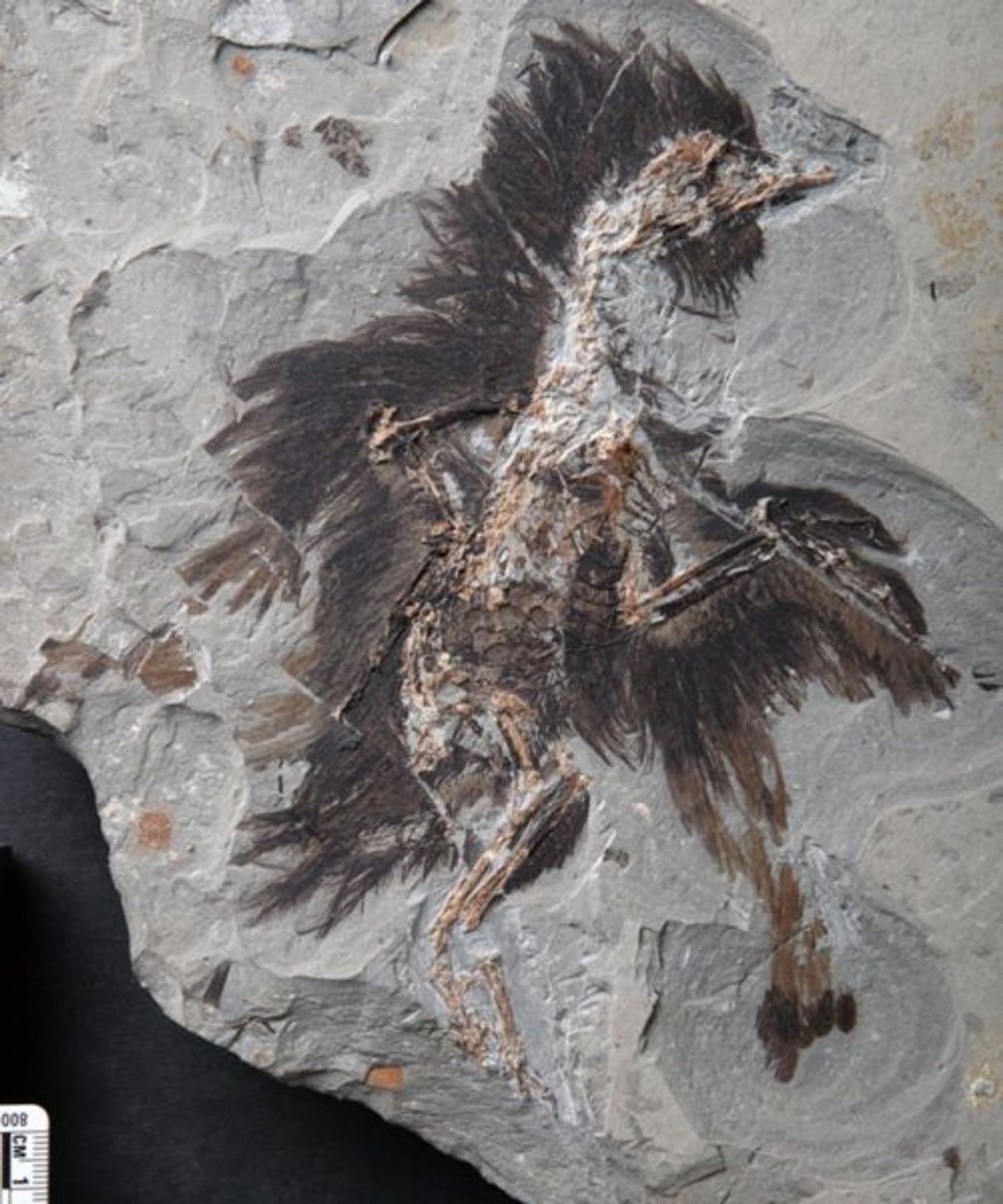Scientists Find Traces of Color in This 130 Million-Year-Old Fossil
Most of the time, when a very old fossil is found, it’s not easy to get color samples from the fossil because of its age. But using a new technique, international researchers have, for the first time, detected color native to the animal inside of a bird fossil estimated to be about 130 million years of age.
The fossil is of an Eoconfuciusornis, a type of crow-like bird from the earlier times of Earth that was among the first to have a keratin-composed beak instead of teeth, like most birds had back in the day. As you can imagine, this makes this bird species a pivotal kind in time where birds began changing to look more like they do today.

Image Credit: Dr. Xiaoli Wang
As a part of the research, the scientists looked for things known as melanosomes, which are round pieces of pigment with organelles that store color. Scientists have known for a long time that fossils contain melanosomes, but it has been difficult to tell if the melanosomes were a part of the fossil itself or part of an invading microbe, until now.
They were successfully found in the feather regions of the bird fossil, but that alone wasn’t enough to prove that the color samples came from the feather itself. To do that, they needed to find traces of keratin, a type of protein that makes up the bird’s feather structure.
Published in the Proceedings of the National Academy of Sciences is a study that explains the success in determining whether the melanosomes came from the bird itself, or from microbes that bonded to the fossil over time.
"If these small bodies are melanosomes, they should be embedded in a keratinous matrix, since feathers contain beta-keratin," co-author Mary Schweitzer said. "If we couldn't find the keratin, then those structures could as easily be microbes, or a mix of microbes and melanosomes -- in either case, predictions of dinosaur shading would not be accurate."
Using scanning and transmission electron microscopy methods to get a closer look at the fossil, they determined that the melanosomes discovered were actually a part of the bird feather.
Traces of keratin were found in the results, illustrating that the melanosomes sampled must have come from the bird itself.
Not only is this a huge discovery because it was the first time that scientists have ever traced color back to a fossil so old, but it’s also the oldest known specimen of keratin ever discovered, which means it can actually last a lot longer than previously thought.
"This study is the first to demonstrate evidence for both keratin and melanosomes, using structural, chemical and molecular methods," says lead author Yanhong Pan. "These methods have the potential to help us understand -- on the molecular level -- how and why feathers evolved in these lineages."
With this technique found to be successful, perhaps additional research into keratin and melanosomes can provide more insight into feather and beak development into the early bird-like life forms of Earth that led to what we have today.
Source: The Washington Post








